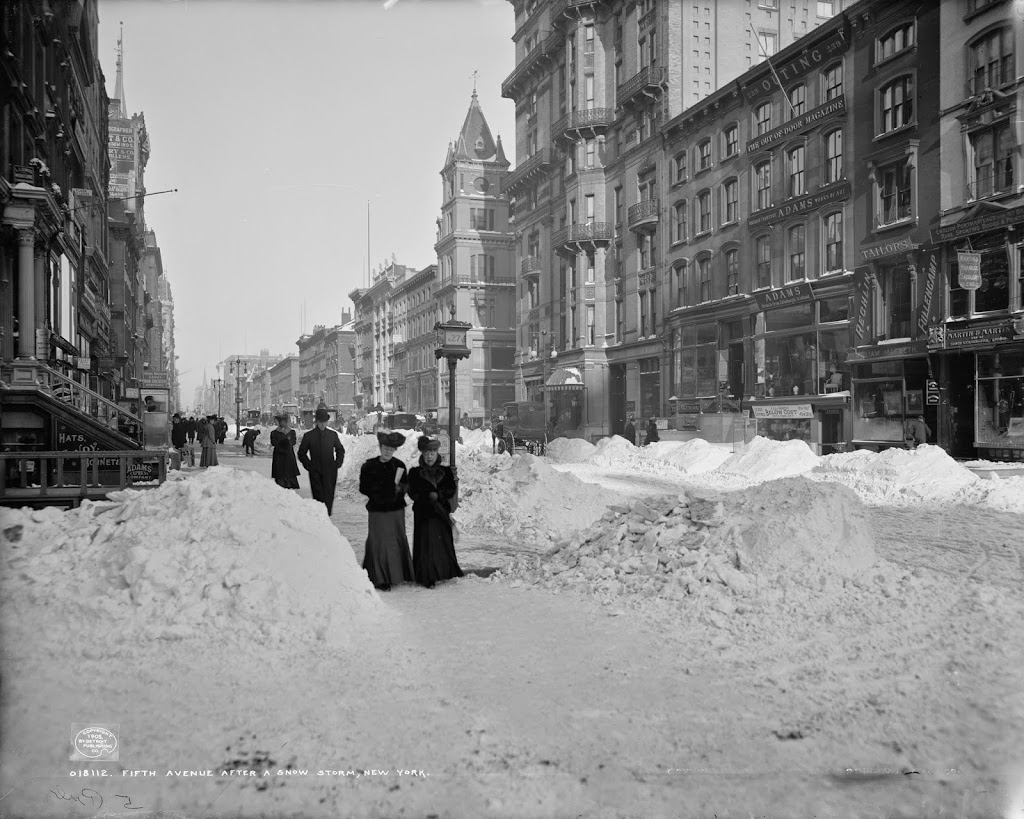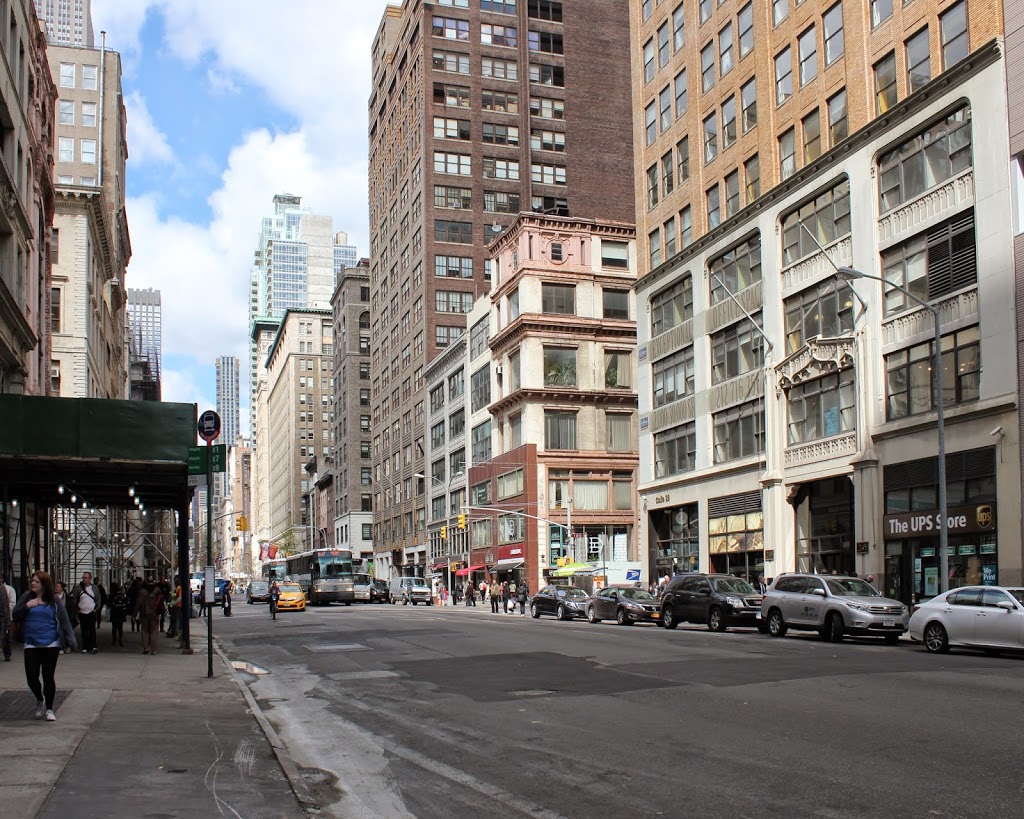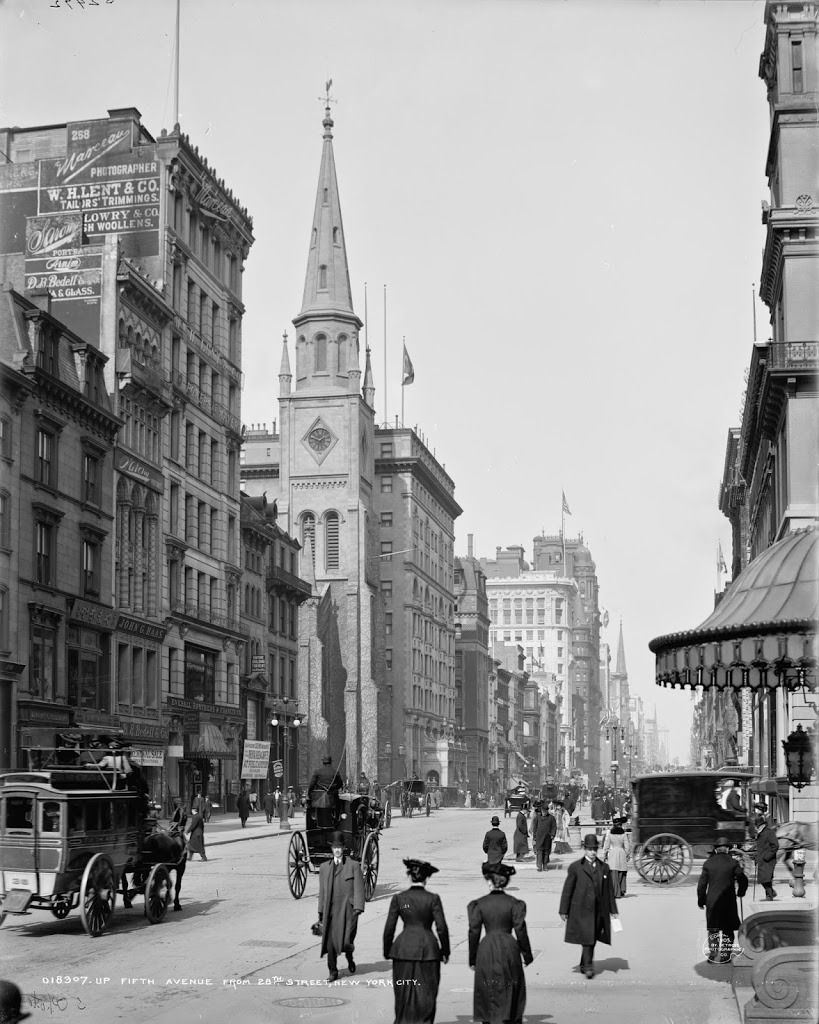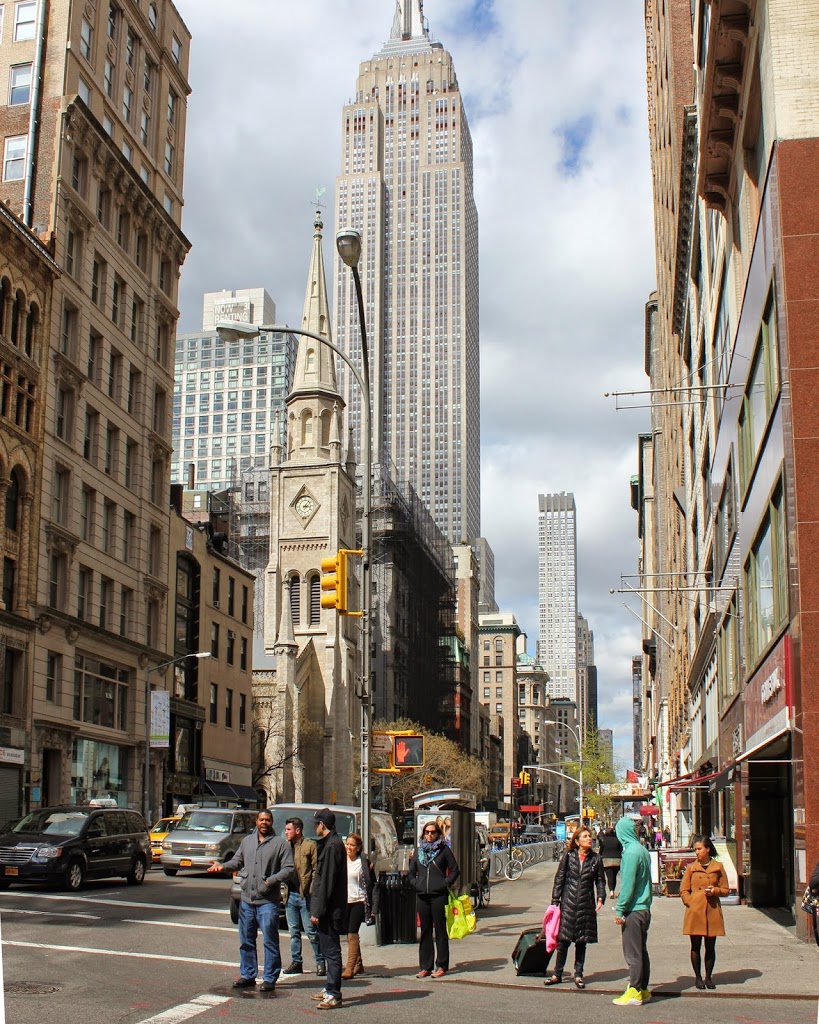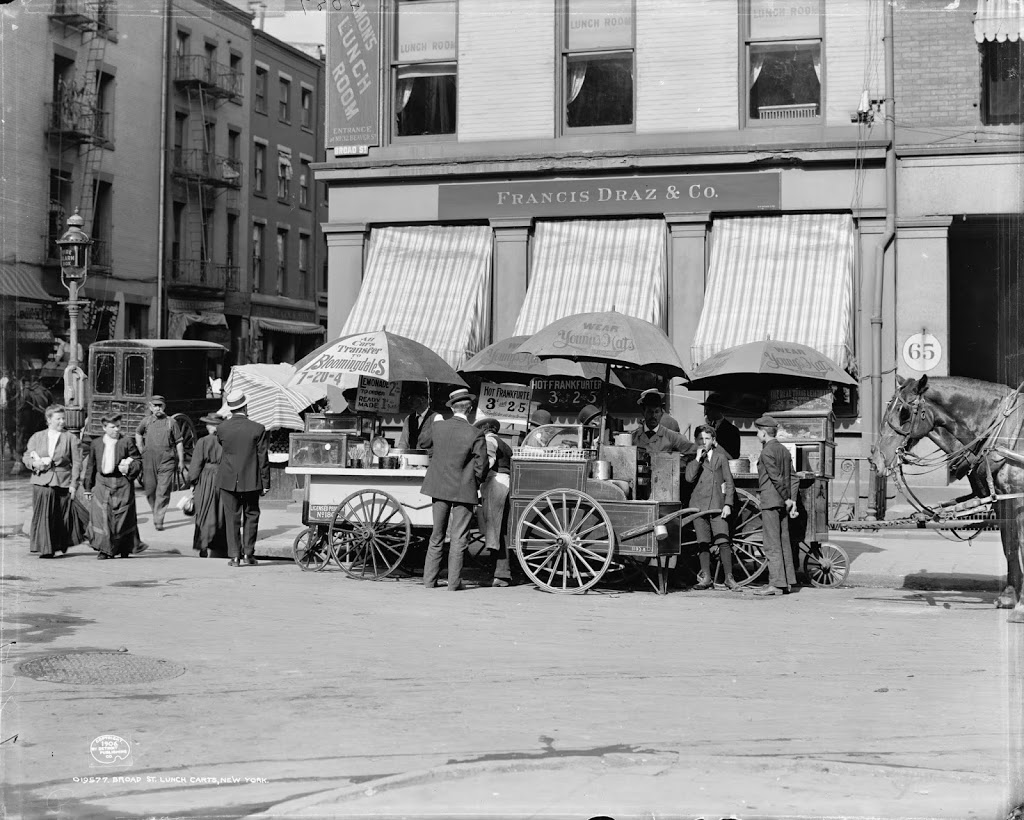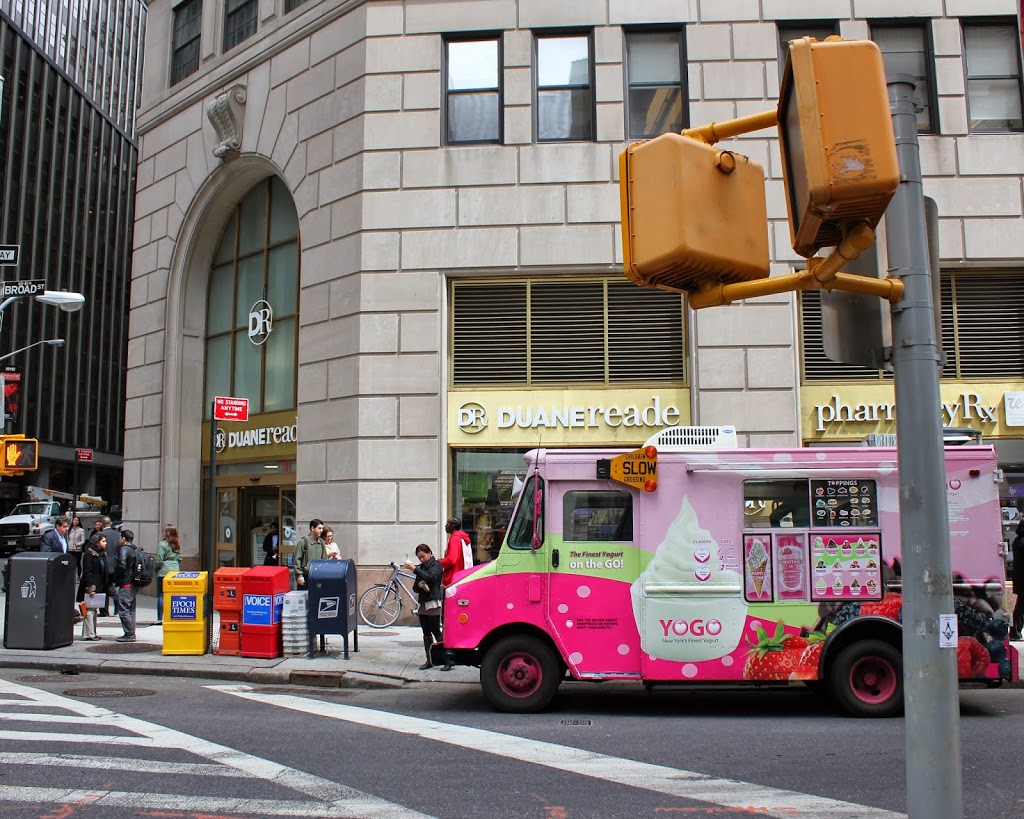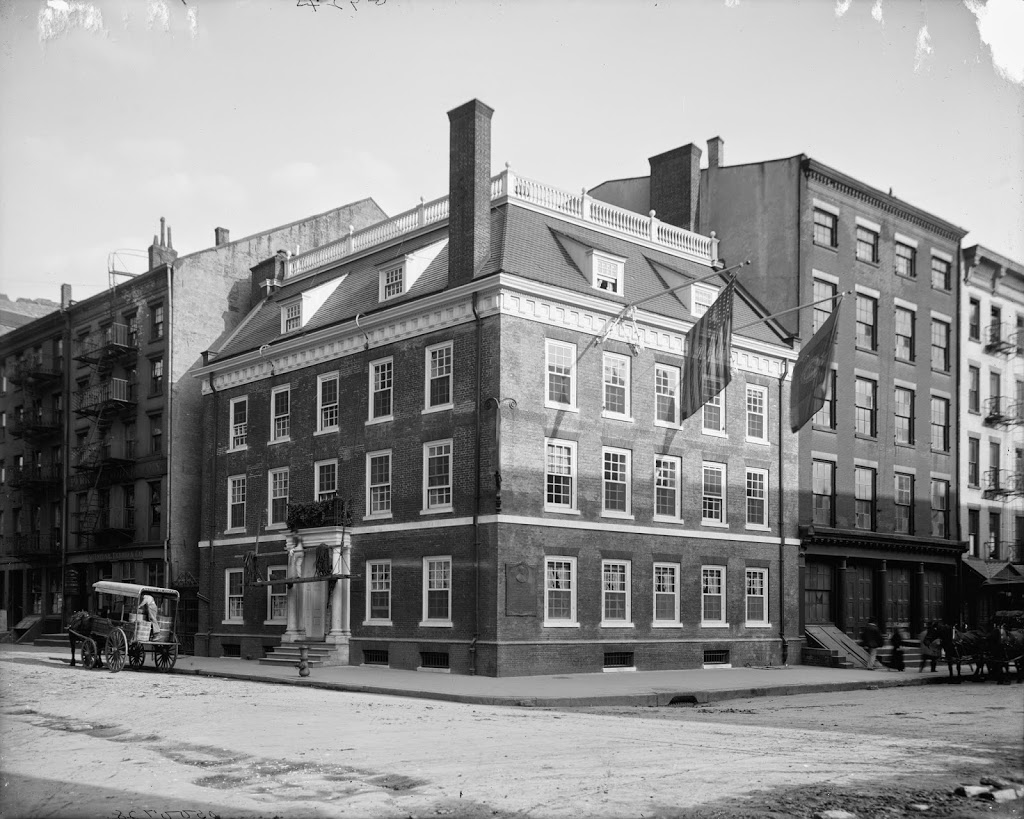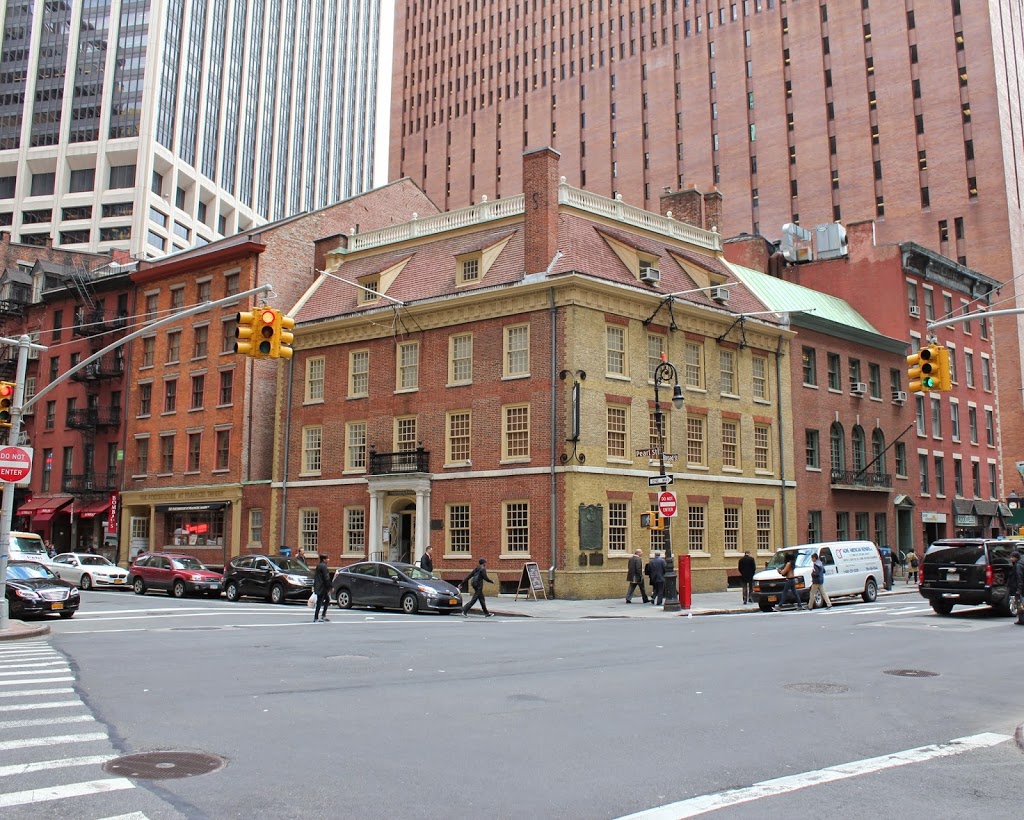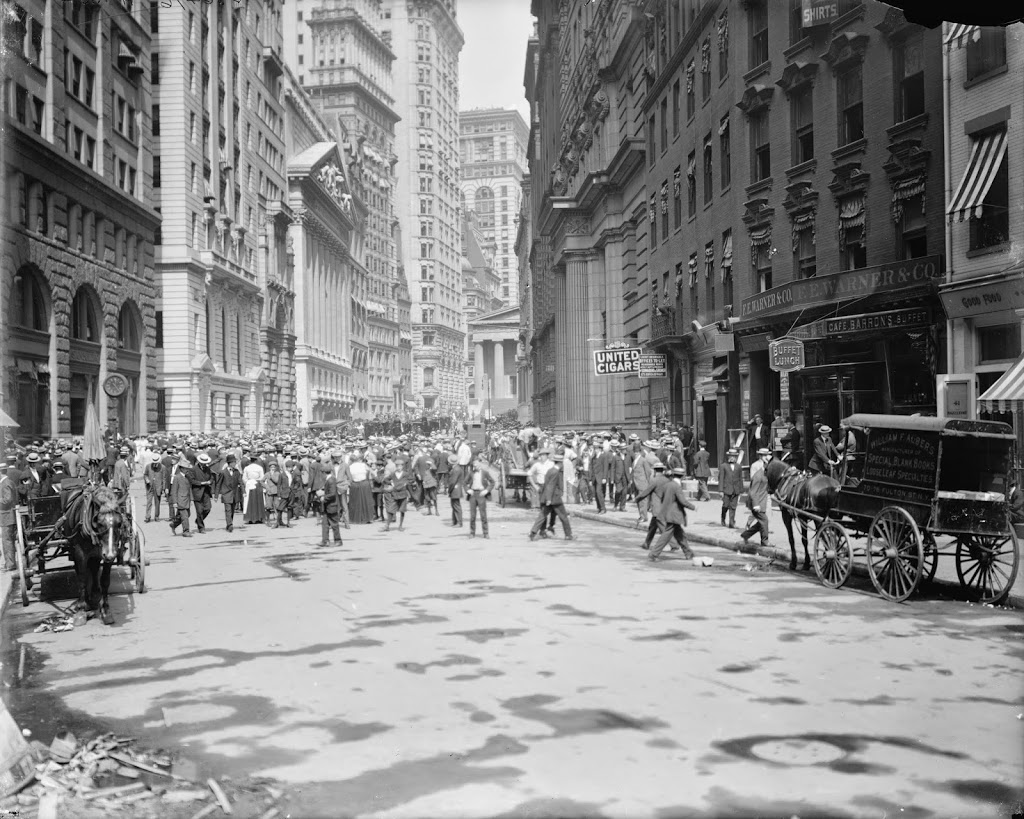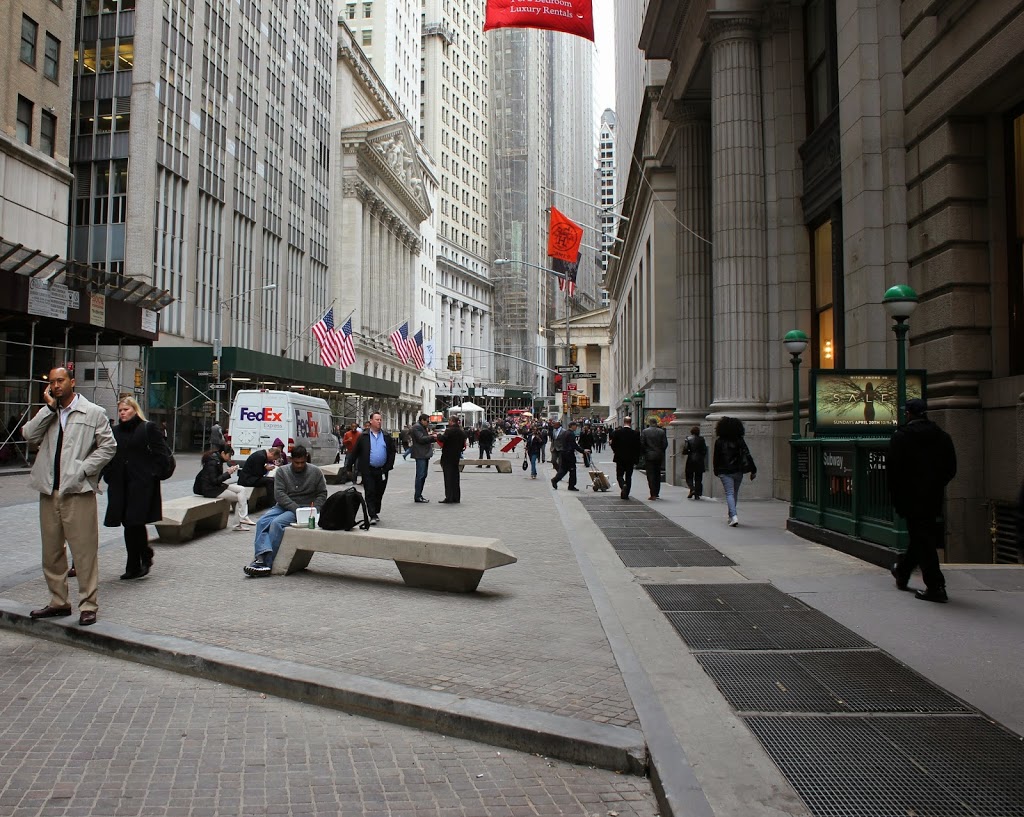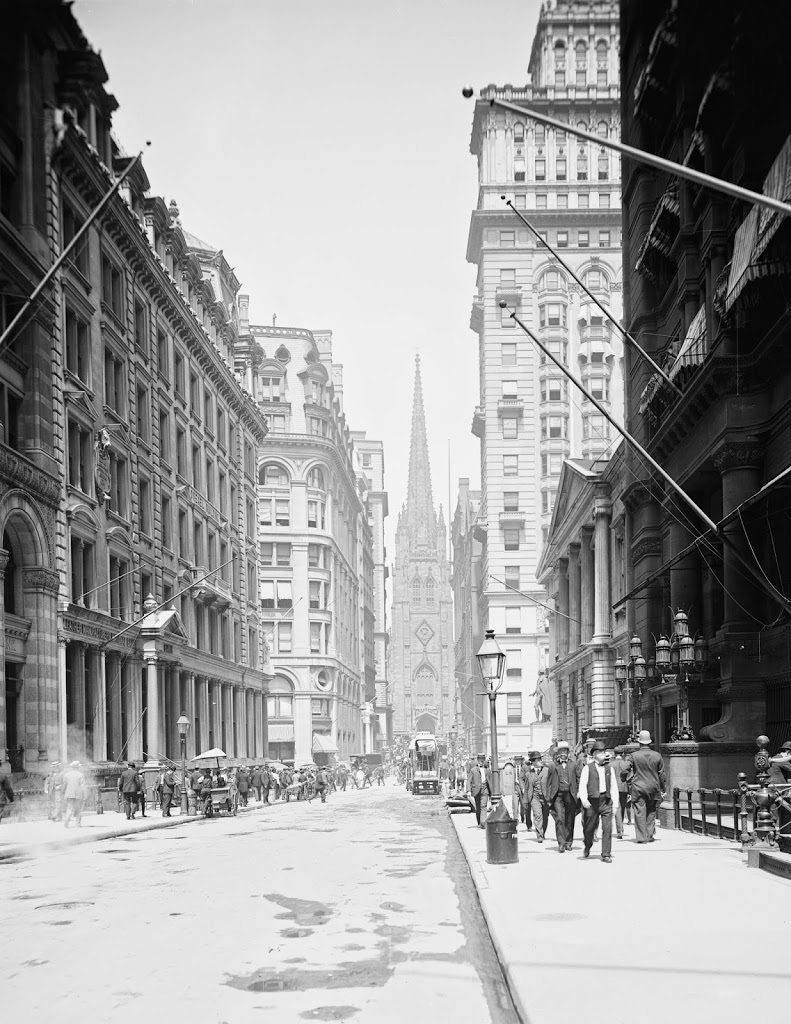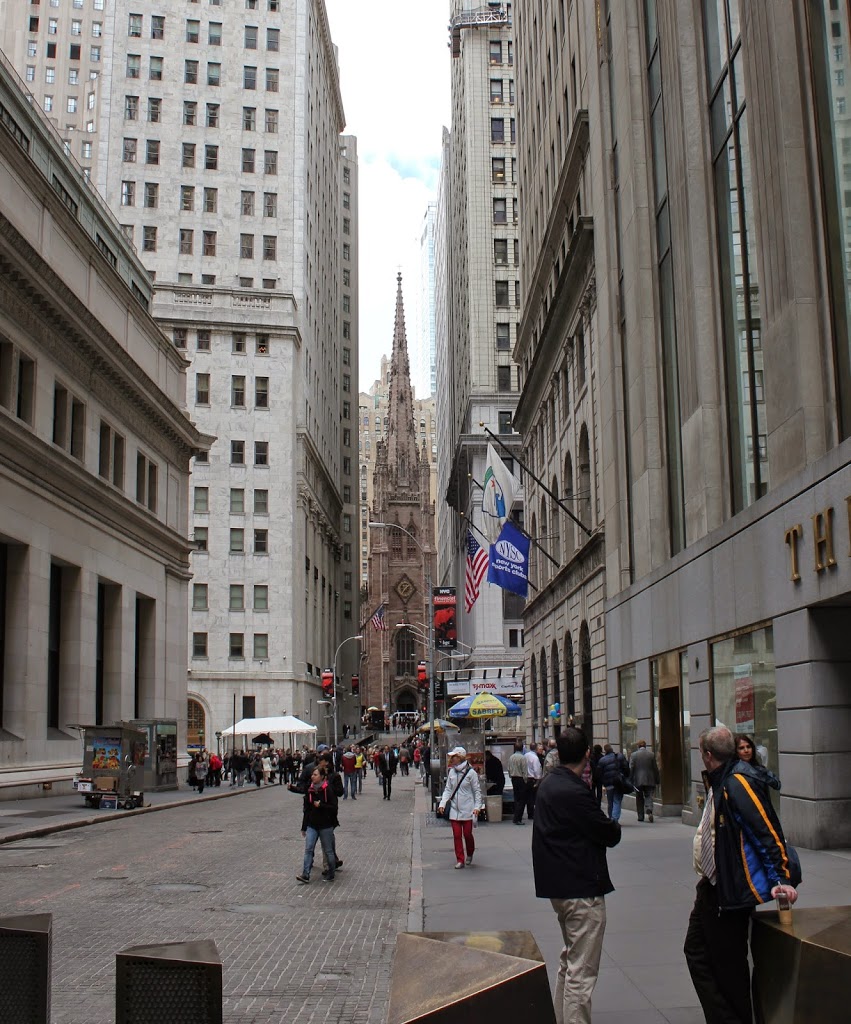The view looking up Fifth Avenue from 27th Street after a snowstorm, around 1905. Image courtesy of the Library of Congress, Detroit Publishing Company Collection.
The view in 2014:
Taken a block south of and across the street from this view, these two photos show a very different Fifth Avenue over the past century. Most of the buildings in the 1905 view are around four stories high, all of which have since been replaced with modern high-rises. The only building left from both photos is the one in the center, at the corner of Fifth and 28th. In the first photo, it has a clearly defined tower, but the pyramid-shaped cap at the top is no longer there. In 1905, it was fairly prominent among the rest of the buildings, but today it is one of the shortest in view.

